How your chances of getting pregnant change with age
Age is the main factor that affects fertility, that is, the ability to conceive, bear and give birth to a child. The supply of eggs in the female body is limited, and over time, their quantity and quality gradually decreases.
In addition, various diseases accumulate over the years: gynecological (for example, fibroids, endometriosis, infections, adhesions) and general (hypertension, diabetes). Which also reduces the chances of conceiving and carrying a child.
On average, fertility begins to decline at the age of 32. Delayed child-bearing, and after 37 years this process noticeably accelerates. So, at the age of 25, 87.5% of women can conceive a child within a year. At 30 years old - 83.9%, at 35 - 73.3%, and at 40 years old - only 49.4%.
It is worth noting that the age of both partners plays a role in the issue of childbearing. Male fertility also decreases Fertility and the Aging Male over time, but this happens after 40 years and much more slowly. Physiology and lifestyle are also to blame: the quantity and quality of sperm decreases, sperm activity decreases, and more “defective” cells appear.
It is worth assessing the age of the couple, not just one woman.
The likelihood of genetic diseases and neurological disorders in the unborn child, such as epilepsy and autism, also increases. How does paternal age affect a baby's health? with the age of the father.
What are the risks of late pregnancy?
Over the years, not only the ovulatory reserve, but also the resources of the body as a whole are depleted. Chronic diseases, excess weight appear, hormonal levels change, and the body recovers more slowly from illness.
And all this can affect the course of pregnancy, that is, the health of both the mother herself and the unborn baby. Let's consider what problems mature mothers may face:
- Gestational diabetes.
According to the American Diabetes Association, it develops more often at older ages. So, if up to 25 years of age the risk of developing the disease is 2.59%, then at 35-40 it is already 4.38% Maternal Age and Prevalence of Gestational Diabetes Mellitus, and after 40 years - 15.9%. If diabetes is ignored, it can cause excess fetal growth, premature birth and other complications in the baby. - High blood pressure.
Appears more often in women over 35 years of age. American researchers have discovered a delayed negative effect of late childbirth on the cardiovascular system. Women who gave birth after age 40 had a 60% higher risk of future stroke. Pregnancy in Advanced Age Increases the Risk of Hemorrhagic Stroke in Post-menopausal Women. Analysis of Women's Health Initiative Study. - Caesarean section and complications during childbirth.
Such as placental abruption or fetal malposition. Scientists suggest Effect of reproductive aging on pregnant mouse uterus and cervix that with age, the muscles of the uterus contract worse due to cellular changes and less sensitivity to oxytocin and progesterone. - Spontaneous miscarriages and fetal death in the womb. These risks almost double after 40 years Advanced maternal age and adverse perinatal outcome, however, in healthy women at any age this figure is still lower.
- Premature birth.
The likelihood of early birth is slightly higher after age 35. More often, doctors blame age for this, but a recent study, Advanced maternal age and the risk of low birth weight and preterm delivery: a within-family analysis using Finnish population registers, refutes this connection and explains preterm birth by a combination of factors and concomitant diseases. - Chromosomal abnormalities in a child
. The genetic material of both parents “ages”, so the older the couple, the higher the risk of having a baby with Down syndrome and other disorders. If under 25 years of age this is 1 case out of 1,587 Selected Birth Defects Data from Population-Based Birth Defects Surveillance Programs in the United States, 2006 to 2010: Featuring Trisomy Conditions, then in 35 it is 1 out of 390, and after 40 years it is already 1 out of 122. - Multiple pregnancy.
Due to hormonal changes, the chances of having twins increase with age. Of course, there is nothing wrong with this, except for the additional burden on the female body and the risk of premature birth. Perinatal outcome of twin pregnancies in women of advanced age, which was already mentioned above.
It is worth noting that the level of medicine has increased significantly over the past decades, so today it is easier to prevent and promptly identify almost any pathology. And mature mothers approach pregnancy more consciously and do everything to preserve it.
Threat of premature birth?
The threat of premature birth - a false forecast or a dangerous reality?
“I was leading my usual active lifestyle, and suddenly, completely unexpectedly, labor began at 34 weeks of pregnancy. The child was born immature, and we had to stay in the hospital with him for almost a month. Why, when visiting the antenatal clinic in the last two months of pregnancy, did no one ever suggest that I do a cervical examination? It turns out that the threat was there all along, and I didn’t even know about it.”
“The doctor diagnosed “threat of premature birth” and prescribed bed rest. I spent a whole month at home without walking or moving. The eldest child had to be given to his grandmothers. And, in the end, she passed her due date by a whole week and a half! Even intensive walks did not help provoke labor. We were already talking about planned stimulation. Thank God, I gave birth on my own.”
These contrary realities of medical practice are errors in medical diagnosis. In the first case, the risk of a threat of premature birth is underestimated, and in the second, it is overestimated by the specialist. The consequences of incorrect diagnosis can be unpleasant in both cases.
Can pregnant women themselves help specialists in making a competent prognosis for childbirth in order to reduce the risk of getting into these extreme unpleasant situations?
It turns out yes! To navigate the situation, let’s arm ourselves with clinical thinking skills and analyze both opposite options according to the scheme:
- possible consequences,
- reasons for occurrence,
- risk prevention methods.
- diagnostic signs
- treatment methods,
First, let's decide on the timing . The normal average duration of pregnancy falls within fairly wide boundaries: 40 weeks from the first day of the last menstruation (or 38 weeks from the day of conception) plus or minus two weeks. Since most women cannot accurately indicate the day of conception, it is customary to focus on the norm - 40 weeks, counted from the first day of the last menstruation. To be completely precise, from 37 to 42 weeks of pregnancy, childbirth is not considered early or late. The 36th week of pregnancy is borderline in this regard. Of course, this range is generalized for a large number of genera, and each specific case requires an individual approach. For example, for a woman who would normally give birth at 38 weeks, giving birth at 41 weeks will be considered postmaturity. And vice versa, if a woman gives birth to all her children at 41 weeks, then a child born to such a mother at 37 weeks will have obvious signs of immaturity.
Individual limits of normal due date , or your lower limit of normal, can be determined based on the following signs:
- If an individual menstrual cycle is less than 28 days (from the first day of one menstruation to the first day of the next), then there is a tendency to carry a pregnancy for less than 40 weeks - and this is normal. At the same time, there is a dependence: the fewer days in the menstrual cycle, the earlier you can give birth without fear. Those. in women with short cycles (less than 28 days), a pregnancy lasting 37-40 weeks will be considered normal.
- If in the family the expectant mother had a tendency towards earlier births without complications, then with a high probability this can be expected in the woman herself. There is a hereditarily determined biorhythm for the development of an intrauterine child, and therefore for the onset of childbirth.
- If a woman has a mature birth canal (according to manual examination), and the baby plans to be large and has mature lungs (according to ultrasound), then an earlier onset of labor does not pose a danger to the mother and baby.
Consequences of premature birth, i.e. births occurring before 36-37 weeks of pregnancy are a serious problem for practical obstetrics, pediatrics, parents and sometimes for the child himself.
Newborn baby boy covered in vertix inside incubator
For a child, the risk of premature birth is associated with the immaturity of its systems: primarily the respiratory, nervous and immune systems. The immaturity of the respiratory system is fraught with acute and chronic hypoxia (oxygen starvation), which the child sometimes cannot cope with on his own, and success depends on the availability of resuscitation equipment for premature babies in the maternity hospital where the birth took place. The immaturity of the nervous system can lead to poor coordination between other systems and organs of the newborn’s body, which creates difficulties in adapting to new living conditions. For example, due to the immaturity of the nervous system, a baby may have involuntary breathing pauses, an inhibited sucking reflex, digestive difficulties, poor sleep, etc. The immaturity of the immune system makes the child more vulnerable to infections, both external and internal.
Premature birth is often complicated by the need for medication and surgical interventions during its course due to the immaturity of the hormonal systems of the mother and child, as well as due to the immaturity of the mother’s birth canal. This, in turn, is an additional burden for the child. In addition, for a premature baby, even an uncomplicated birth is a more difficult ordeal than for a child born at term.
For the mother, premature birth is complicated by the fact that the immaturity of the cervix and hormonal factors create more favorable conditions for a long, difficult labor: the risk of primary (during contractions) and secondary (during pushing) weakness of labor, high pain component of labor, and rigidity increases cervix, non-separation of placenta, postpartum bleeding.
For the whole family, the birth of a premature baby turns out to be an unexpected burden associated with anxiety for his life and health and additional expenditure of effort and time on rehabilitation.
Causes of premature birth and prevention of such complications.
We will divide the reasons into predisposing factors or risk factors, which are not an immediate threat, but with a careless lifestyle can lead to it, and real threatening signs of premature birth, the appearance of which requires urgent treatment.
Medical science identifies four groups of risk factors :
- socio-biological reasons: mother’s age under 18 years, work involving great physical or nervous stress, bad habits, certain living conditions (for example, frequent and prolonged exposure to the sun, breastfeeding during pregnancy, etc.);
- obstetric and gynecological history: short menstrual cycle, history of abortions, miscarriages, premature births, a large number of births, some gynecological diseases (especially infections of the birth canal) and pathologies of the development of the uterus and cervix;
- extragenital diseases: acute infections during pregnancy, pathologies of organs and systems of the mother’s body;
- complications of the current pregnancy: placenta previa, premature aging of the placenta, polyhydramnios, oligohydramnios, Rh sensitization, severe gestosis.
The combination of several risk factors at the same time is a reason for more vigilant self-diagnosis and a more cautious lifestyle in the last trimester of pregnancy.
The experience of practicing doctors and obstetricians shows that the following reasons from the group of risk factors most often lead to premature birth:

Reason 1: As perinatal practice shows, the largest number of all premature births occurs due to premature rupture of the membranes and rupture of water. And cases of premature damage to the membranes, in the vast majority of cases, occur due to untreated vaginal infections. Sometimes a simple thrush, which is firmly entrenched in the mother’s vaginal flora, can lead to looseness of the membranes and cause their premature damage.
Prevention: Therefore, timely diagnosis of birth canal infections and treatment is the prevention of premature births that occur due to premature rupture of water.
Reason 2: Another common cause of early labor is the so-called “short” cervix. Normally, by 35-36 weeks of pregnancy (i.e. before the birth canal begins to mature for childbirth), the length of the cervix is about 2-3 cm. If the cervix is shorter than 2 cm at an earlier stage of pregnancy, then there is a predisposition to the threat premature birth.
Prevention: Predisposition is not a threat itself, but a signal for a more careful lifestyle until 37 weeks of pregnancy. You should not: lift weights, stand for a long time, walk up the stairs, intensify intimate communication with your husband, perform exercises to strengthen the abdominal muscles, breastfeed, take hot baths and showers, use drugs that shorten the cervix (for example, No-shpu) , be nervous.
The presence of a short and soft cervix in the absence of increased tone and in the absence of vaginal infections is not a serious prerequisite for the onset of premature labor. Women who have reached 37 weeks with a diagnosis of a “short cervix” should gradually change their lifestyle to a more active one, otherwise the opposite risk may arise - the risk of post-term pregnancy due to the mother’s body inhibiting the development of prenatal processes.
The diagnosis of “isthmic-cervical insufficiency” (open cervix) is included in this group of causes and often requires a gentle lifestyle, mastering relaxation techniques, and often surgical correction in the early stages of pregnancy.
Reason 3: Early increased uterine tone is a reason that often worries specialists, but is not very often the real cause of premature birth. The presence of increased uterine tone with a dense and long cervix, as well as with a posterior bend of the cervix, is not a serious cause for concern. Increased uterine tone is dangerous in combination with a short cervix and infections of the birth canal.
There is a self-diagnosis method that allows you to distinguish the background increased tone of the uterus from the progressive one, which can develop into untimely real labor - the maternity test.
The maternity test allows you to determine the readiness of the female body for childbirth. The test is considered positive if, after three minutes from the start of finger stimulation of the nipples, one contraction occurs, and within ten minutes of stimulation there are at least three. Normally, this test can be positive 3-10 days before birth.
If a woman has increased uterine tone, but the maternity test is negative, then there is no risk that the tone may develop into labor contractions in the near future. But if the test is positive, and the period is still far from 37 weeks of pregnancy, this is a reason to quickly contact a specialist. Bed rest and pharmacological therapy may be required.
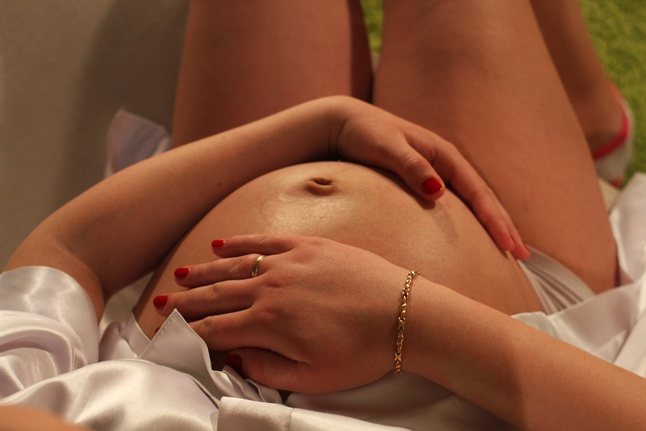
- increased uterine tone,
- softening and shortening of the cervix,
- the appearance of bloody discharge (the so-called red mucus plug),
- increasing cramping pain
(symptoms are listed in order of increasing risk of preterm birth).
The appearance of several signs or the last two signs before the 37th week of pregnancy is a signal to immediately contact a specialist.
Methods of treatment (correction) of the threat of premature birth are medical and psychological. Exclusively psychological methods are used in cases of low threat. In other cases, they are combined with a medical approach. Medical tactics for prolonging pregnancy are used when the amniotic sac is intact, the pharynx is open to 4 cm, there are no signs of infection and the child is in good condition.
The complex for correcting the threat of premature birth includes:
- gentle or even bed rest,
- a light, vitamin-rich diet,
- medications (sedatives, antispasmodics, antiprostaglandins, tocolytics),
- muscle relaxation method,
- auto training,
- psychotherapy.
Parents can do an infinite amount on their own if they combine their efforts to support their child in a difficult situation. Careful and loving touches, parental words, mental communication with the baby, changes in lifestyle, and sometimes in the way of thinking, constructive interaction with specialists are the main means of overcoming the risk of early birth.
And as you approach the 37-week mark, don't forget to give yourself permission to give birth! Let the onset of labor be a timely and pleasant surprise for everyone!
What else affects fertility?
Not only the biological clock sets the ideal time for the birth of a child at any age.
External factors and, most importantly, lifestyle also affect the quantity and quality of sperm and eggs.
Here's what Female fertility says: Why lifestyle choices count at the Mayo Clinic: alcohol, tobacco, stress, excess weight, infectious and chronic diseases, and even extra cups of coffee reduce the likelihood of conception. This means that by eliminating these factors, we increase the chances of becoming parents.
Are there any benefits to late pregnancy?
The main advantage of having late children is that they are desired and are born into families where parents are ready to take on this role. Such children learn better and develop socially.
Thus, researchers say Advantageous developmental outcomes of advancing paternal age that fathers in the older age category produce children with a relatively high IQ. They easily focus on their interests and try less to fit into society's standards.
Aging sperm may contain chromosomes with longer telomeres, which protect DNA and are responsible for longevity. Moreover, this effect persists for two generations ahead.
Are there benefits for the parents themselves? Undoubtedly. Not only are mothers calmer during pregnancy, but they are also less likely to raise their voices at their children or punish them later. Such women retain verbal memory longer Effect of Reproductive History and Exogenous Hormone Use on Cognitive Function in Mid- and Late Life. Scientists even judge the level of happiness from having children, which, according to their assessment Happiness: before and after the children, is higher in adulthood.
What to do if you are still not ready to give birth
Not being ready for children in your youth is another reason to be more attentive to yourself and stay healthy longer. And you don’t have to do anything particularly complicated.
- Take care of yourself. Eat well, rest, spend more time outdoors, move, and give up smoking and alcohol if possible.
- Take care of your health. Do not neglect routine medical examinations, vaccinations, have your teeth treated on time, monitor your blood sugar and blood pressure levels, and control chronic diseases if you already have them. Talk to your doctor about how these conditions may affect your fertility and future pregnancies.
- Find a good doctor. You should trust this specialist 100% and not be afraid to discuss all the risks and possibilities, including cryopreservation of eggs and sperm and IVF.
Modern medicine makes it possible to postpone childbearing until you are ready for it morally and financially. And it can prevent complications that only a few decades ago frightened old-time women. So it makes sense not to rush, but to treat yourself more carefully. Health is more important than age.
The birth of a child after 35 years is the most common thing today; no one will be surprised. However, in medical language such births are called “late”. Are there any specific risks for such a “late” pregnancy? Do I need to prepare for it somehow? What complications may arise? Marina BLINOVA, obstetrician-gynecologist of the 1st qualification category at the Novosibirsk Center for Reproductive Medicine of the Mother and Child Group of Companies , ultrasound specialist, tells the story.
What can cause labor at 36 weeks?
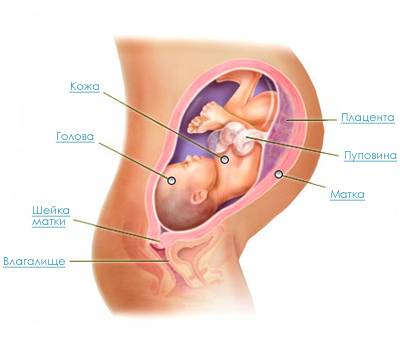
There are several reasons why childbirth may occur ahead of schedule. In this case, a distinction is made between physiological and pathological causes.
The first series of reasons include:
- Acquired and congenital defects of the uterus and organs of the reproductive system as a whole.
- Previously undergone surgical interventions in the uterine cavity and pelvic organs.
- Incorrect location of the placenta and others.
To the second:
- Chronic diseases in the mother not related to pregnancy.
- Late gestosis and intoxication.
- Infectious diseases in the mother and infection of the fetus.
It is worth highlighting such reasons as early and late age of the expectant mother, injuries and excessive physical activity, including vitamin deficiency. A prolonged stressful situation and unfavorable living and material conditions can influence the onset of premature birth.
As a result, all these and some other disorders can provoke the development of premature birth. Knowing about them, to one degree or another, you can prevent undesirable consequences. After all, the baby at 36 weeks of pregnancy is still developing.
Top
Conception after 35 years
Over the past 25 years, the number of women becoming mothers over the age of 35 has increased by 90%. If fifteen years ago the unpleasant word “old-timer” was used to describe twenty-five-year-old women in labor, today the “late” age has moved to 35.
Expert commentary
— More and more women are postponing having a child until later in life. This is due to economic and social prerequisites: financial security, housing, stable work and career, the presence of a permanent partner. This solution is often advocated not only by women themselves, but also by their employers.
“For example, Microsoft pays its female employees to cryopreserve germ cells and store them until they reach the age of 35.
It is important to understand: after 35 years, the female body begins to experience a decline in reproductive function and the number of eggs decreases. A woman goes through several cycles a year without ovulation, and the older the woman, the more often her ovaries take a “vacation.” Therefore, after 35-40 years, the chances of quickly conceiving decrease.
Expert commentary
— With age, natural physiological changes occur associated with the gradual decline of reproductive function, despite the regular menstrual cycle. At a later age, infertility examination should begin after six months of unsuccessful attempts to conceive a child. Particular attention is paid to assessing the ovarian reserve according to ultrasound and hormonal profiles. It is better to conduct the examination in a specialized clinic with a specialist involved in reproductive health issues - a reproductologist.
Cause of birth at 36 weeks
Often the main reason for the onset of labor at such an early stage is infection of the mother. When there is no infection inside the uterus, its walls are elastic and full. If infected, the body begins to attempt to get rid of the fetus. Therefore, even before pregnancy, a woman should take care to enter this important stage of life completely healthy. This can be done using various examinations and analyses.
Infections that can cause premature birth, but occur without obvious symptoms:
- mycoplasma;
- ureaplasma;
- chlomydial;
- toxoplasma;
- cytomegalovirus;
- herpes virus.
Including women who suffer from acute or chronic inflammation of the uterine appendages or have undergone intrauterine interventions are also at risk of giving birth prematurely.
A particularly common cause of birth of a child in the thirty-sixth week is ICI (isthmic-cervical insufficiency). It can be congenital or acquired.
Reasons for acquired ICN:
- Intrauterine intervention, which caused damage to the cervix, especially during the first pregnancy.
- Severe trauma to the cervix during a previous birth.
- Inaccurate expansion of the circular canal.
- Endometrium.
In addition, the thirty-sixth week may be the final week during pregnancy if the expectant mother experiences:
- endocrenopathy;
- polyhydramnios;
- hyperextension of the uterus;
- large child;
- nervous tension;
- overwork;
- illness with a sharp increase in temperature.
Carrying a pregnancy after 35
In principle, carrying a pregnancy after 35 is no different from this process at any other age. But the older the woman, the higher the likelihood of miscarriage - spontaneous miscarriage.
Expert commentary
— It has been statistically proven that the percentage of spontaneous miscarriages increases with age. Among the main causes of miscarriage are:
- increasing risk of fetal chromosomal pathology,
- acquired gynecological diseases,
- concomitant diseases, mainly of the cardiovascular and endocrine systems.
Of particular note is the initial quality of germ cells, both women and men. With age, the risk of chromosomal pathology increases, therefore, from the first weeks, observation by an experienced doctor and, possibly, hospitalization are necessary to maintain pregnancy during critical periods. Prenatal diagnostics are mandatory: biochemical markers of chromosomal pathology and ultrasound; if indicated, if there is an increased risk of fetal pathology, invasive diagnostics are performed.
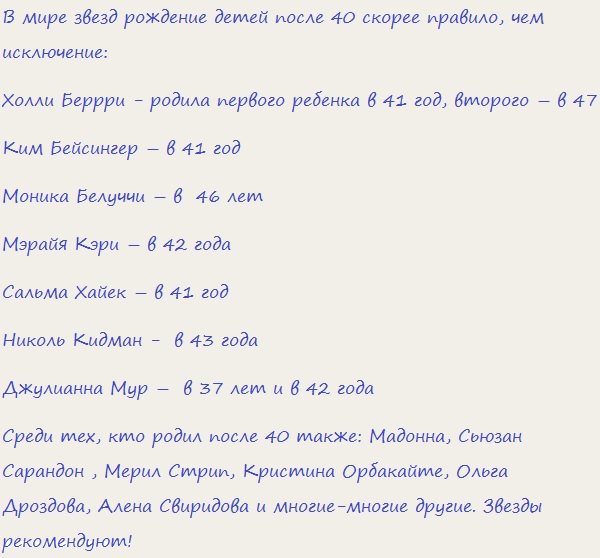
What are the dangers of childbirth for a child?

Starting from the 36th week of pregnancy, a woman is required to visit her gynecologist every week and undergo a series of tests again - general blood and urine tests, and a smear to determine microflora. The doctor, in turn, must take measurements of blood pressure, pelvis, height and weight.
At 36 weeks of pregnancy, the baby's approximate weight is 2700 grams and height is 44-46 centimeters. But these parameters are purely individual and depend on many parameters - the physiological characteristics of the parents, the mother’s nutrition.
The baby is already looking quite chubby this week. His cheeks were rounded due to the accumulation of fatty tissue under the skin. His skin is pink and velvety. He loves to suck fingers and toes.
The baby's genitals are fully formed. But the respiratory, immune and endocrine systems are still completing their development. The process of iron deposition still occurs in the liver. It is necessary for hematopoiesis.
The baby born this week will be able to breathe on his own. However, his immune system is not yet fully prepared to meet the environment, and the fat layer will not be able to retain heat well. Neurological problems may also develop. They can appear immediately or later with age.
Such problems include:
- Weak reflexes.
- Hyperexcitability.
- Severe sleep disturbance.
- Anxiety.
Premature birth for the baby is also dangerous due to the long course of “jaundice” and a high risk of developing pneumonia. Therefore, after birth, the baby is generally placed in an incubator and frequent blood tests are performed. If the outcome is positive, the baby and mother are discharged home after 7 days.
For the mother herself, premature birth at 36 weeks can be fraught with a lack of milk. However, breastfeeding experts say that with a strong desire, lactation can still be established.
Top
Risk of chromosomal pathologies during pregnancy after 35 years
The risk of genetic pathology in the fetus exists during any pregnancy, but the risk increases with age. Therefore, prenatal screening (ultrasound diagnostics and a set of laboratory tests) is strongly recommended for all pregnant women over 35 years of age.
Expert commentary
— Age is a significant factor that itself increases the risk of chromosomal pathology. At age 40, the risk of having a child with Down syndrome is 1:100. It is worth paying careful attention to prenatal screening. It consists of two stages and is based on biochemical markers and ultrasound data, which makes it possible to identify a high-risk group for invasive diagnostics.
Pregnancy after 37: difficulties and opportunities
In our practice, we increasingly encounter patients in the so-called “late reproductive period.” The beginning of this period is considered to be the age of 35-38 years. Despite the fact that most modern women manage to cheat time, look fresh and have a toned figure, reproductive function in these years is already rapidly declining. Social trends force millions of women to postpone motherhood until after 30 years of age. Meanwhile, involutive processes, which reduce the likelihood of natural pregnancy and the effectiveness of a standard IVF program, begin to fade after the age of 30.
Is it possible to slow down the decline of reproductive function?
Unfortunately no. In a biological sense, aging is universal and inevitable. Age-related depletion of the supply of follicles in the ovaries and deterioration in the quality of oocytes are due to the laws of nature. But the rate of aging of the reproductive system of each woman is determined genetically, and the period of decline in hormonal functions of the ovaries is also individual for each of us. Although there are exceptions, on average, fertility disappears by age 40.
In our work, we try to correctly guide patients during infertility treatment, avoid situations that delay the onset of pregnancy and recommend IVF in cases where there is no longer time to try to restore natural fertility. Sometimes the count goes on for months.
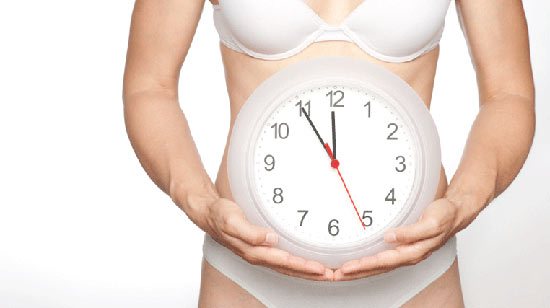
How does age affect fertility?
First of all, this is a decrease in ovarian reserve.
Ovarian reserve is the ability of the ovaries to develop healthy follicles with full eggs. Ovarian reserve reflects the number of follicles located in the ovaries (“dormant” and growing follicles).
After 37 years, a rapid decrease in the number of follicles that begin to grow (primordial follicles) begins; if in the age group of 20-25 years, 50 such follicles grow daily, then at 34-35 years old - only 17, and by 45 years old - no more than 3 follicles. The small number of primordial follicles and their insensitivity to the FSH hormone reduces the likelihood of spontaneous pregnancy, and also often leads to a “poor response” to stimulation of superovulation in IVF programs.
The second problem is a decrease in the quality of oocytes.
Research shows that in women over 35 years of age, the number of degenerative forms of oocytes increases sharply. Such eggs may exhibit deformation and structural abnormalities. In the genome of embryos formed from the eggs of women of advanced reproductive age, the risk of chromosomal abnormalities increases significantly, which leads to pathologies of fetal development (Down, Edwards, Patau syndromes, etc.). The probability naturally increases as the mother's age increases; according to studies in women over 42 years of age, up to 1/3 of all diagnosed pregnancies have gross abnormalities in the genetics of the embryo.
Further, it should be noted the age-related deficiency of androgens, in particular the hormone testosterone. Low levels of testosterone in the blood cause slow follicular growth and also reduce the ability of embryos to implant and further develop. And an age-related increase in the frequency of gynecological diseases affecting the uterus (endometritis, fibroids and endomitosis), which negatively affects the implantation of embryos.
Preparing for older pregnancy
If the desire to give birth to a baby is really great and you sensibly assess the capabilities and condition of your body, modern medicine has all the necessary capabilities and technologies, both for obtaining pregnancy and for accompanying it.

When we see a low ovarian reserve and the preconditions for a “poor response” to superovulation stimulation in an IVF program, we use special modified stimulation schemes, which in some cases allow us to obtain our own eggs. However, the effectiveness of IVF in the age group over 38 years is only 5-7%. After 2-3 unsuccessful attempts, we are forced to recommend programs with donor eggs, the effectiveness of which is currently about 41% of pregnancies per cycle. But deciding to use donor oocytes is sometimes difficult for many women.
To exclude the development of genetic pathologies in the fetus, a number of tests are possible. This is a PGD diagnosis, when an embryo obtained in an IVF program is diagnosed with genetic diseases even before implantation into the uterine mucosa, that is, before the start of pregnancy. There is non-invasive prenatal DNA diagnostics, when in the early stages of pregnancy the presence of chromosomal syndromes can be determined by analyzing the blood of the expectant mother. Individual pregnancy management programs allow you to correct many problems that arise during pregnancy.
We do everything possible for happy motherhood at any age, despite the nature of aging. However, we should not forget that nature has made it possible to conceive at an age when a young and healthy woman can fully take care of her children. For young readers, we wish to experience the joys of motherhood before the age of 30 and avoid many reproductive problems of the late reproductive period.
Obstetrician-gynecologist, reproductive specialist
VOLCHKOVA Yulia Alexandrovna
Multiple pregnancy and maternal age
“Age-related pregnancy has an unusual feature - along with the mother’s age, the likelihood of having twins (especially identical ones) increases.
By age 40, the possibility of conceiving twins peaks and then begins to decline.
Expert commentary
— The relationship between the frequency of twin births and the age of the mother has been statistically revealed: the older the mother, the higher the likelihood of a multiple pregnancy. In addition, the use of assisted reproductive technologies at this age also leads to an increase in the percentage of multiple pregnancies.
The birth of twins, in addition to double joy, also doubles the burden on the expectant mother’s body, which leads to the risk of pregnancy loss and complications during pregnancy and childbirth.
Changes in the female body
Pregnancy is the most difficult test for a woman’s body. At this time, many expectant mothers experience the following symptoms and phenomena:
- Changes in mood from joyful to depressed for no apparent reason.
- Aversion to favorite foods and cravings for food that you didn’t want to look at before.
- Increased irritability, moodiness.
- Leg pain, swelling.
- Nausea.
- Frequent trips to the toilet (for minor needs).
- Insomnia.
- Lower back pain. The hormone relaxin, which acts on the ligaments of the spine, is to blame for this. By the 35th week of pregnancy, less is produced.
- False contractions. They are called that because they do not last very long and end on their own.
- Difficulty breathing. At this stage, the uterus occupies its highest position (its bottom is 15 cm from the navel), the baby puts pressure on the diaphragm, which is why the mother sometimes does not have enough air. If such an attack begins, you need to get down on your knees and try to take a few calm breaths. When the belly drops, which is a sign of imminent labor, the mother immediately begins to breathe easier.
- Pain in the lower abdomen. If they are not very intense, you can do a few circular movements with your hips. Painful sensations are caused by the fact that in this way the uterus is preparing for the upcoming event. He is training, so to speak.
- Nipple discharge. This is colostrum. There is nothing dangerous in this phenomenon, but a woman should pay more attention to her hygiene.
The woman gradually gets used to all these symptoms.

They are not harbingers of childbirth at 35 weeks of pregnancy, but signify the natural state of the expectant mother’s body. In addition, during this period women often experience the following symptoms:
These symptoms are also not yet harbingers of labor at 35-36 weeks of pregnancy.
Complications during “late” pregnancy
Statistically, complications occur more frequently during late pregnancy. After 35, a woman usually has more chronic diseases, and the ability to quickly restore the body decreases. At the same time, it is obvious that the level of health is a very relative indicator. After all, no matter what the statistics say, a huge number of women over the age of 35 and 40 safely give birth to healthy children!
Expert commentary
— Not only the reproductive system undergoes changes with age, but also other organs and systems of our body. It has been noted that in pregnant women at a later age, the percentage of gestational diabetes mellitus, high blood pressure and preeclampsia increases. Therefore, before planning a pregnancy, a thorough examination is necessary not only by a gynecologist, but also by other specialists. During pregnancy, regular monitoring of blood glucose and blood pressure levels is recommended.
We are not saying that 35 years is the milestone after which the path to motherhood is closed, this is absolutely not true! Age is just a number. It all depends on your overall health; physical, psychological, emotional well-being. But there are tendencies laid down by nature; it makes no sense to deny it. It is necessary to remember the existing risks and approach pregnancy planning more responsibly.
Discharge
Women are often confused and even frightened by vaginal discharge in the third trimester. They are like this:
Late pregnancy

In post-Soviet countries, some doctors still use the term “old primigravida”. This refers to expectant mothers aged 26–28 years. More modern gynecologists consider conception after 35 years to be late pregnancy.
In developed countries, this age shifts to forty years. It matters what kind of child a woman gives birth to. If this is the first-born at 37 years old, then the doctors’ wariness is understandable and understandable. But when it comes to the third or fourth child, excessive attention from gynecologists can tire and irritate the expectant mother.
Pregnancy at 35–37 years old has its pros and cons. And it is very important to consider all aspects:
- Medical.
- Psychological.
- Socio-economic.
Medical aspect
The opinion of doctors regarding late pregnancy is still ambiguous. Some do not see any obstacles to having a child at 35–37 years old, others, on the contrary, intimidate a woman with all sorts of problems.
Often, gynecologists are particularly persistent and even dissuade the expectant mother from late pregnancy, citing serious risks to the health of the woman and child.
Risks
Pregnancy after 35 years is different from that at 22–26. First of all, it is fraught with the following medical problems:
- More complex flow.
- Exacerbation of chronic diseases.
- Exchange disorders.
- Gestational diabetes mellitus.
- Chromosomal abnormalities in a child.
- Violation of labor.
- Difficult postpartum period.
This does not mean that every woman after 35–36 years will encounter these problems. Some, on the contrary, endure the hardships of pregnancy much easier than twenty-year-old girls. However, you still need to know about possible dangers in order to pay attention to problems in your health in time and consult a doctor.
Difficult flow
The difficult course of pregnancy at the age of 37–40 years cannot be explained by any one reason. A combination of negative factors that the expectant mother has to face throughout her life plays a role here.
Obviously, at 20–25 years of age, health is much stronger, there is more strength, activity is increased, and any difficulties are perceived differently. While excess load after 35 years can cause fatigue and apathy, severe fatigue and even depression. Sometimes the body can react to an unexpected load with various diseases.
Older pregnant women often experience severe toxicosis and gestosis, high and low water levels, premature aging of the placenta, and pathological labor.
Exacerbation of chronic diseases
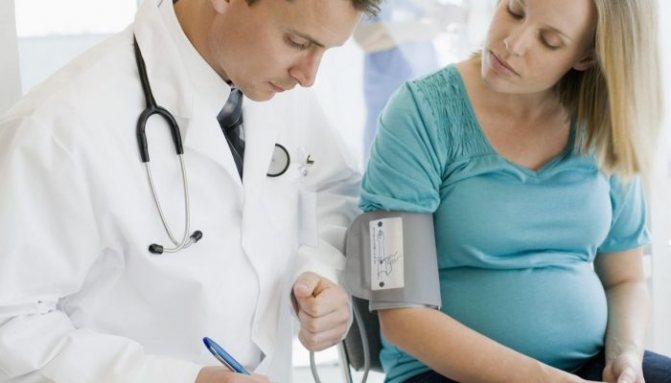
According to doctors, carrying a baby has a negative impact on chronic diseases. Even if they were previously in a state of long-term remission, pregnancy can provoke exacerbations. The older a woman is, the more luggage she has of various pathologies - respiratory and digestive systems, diseases of the endocrine organs.
Frequent colds and acute respiratory viral infections against a background of weakened immunity lead to the activation of opportunistic microflora. The result of this is a recurrent runny nose, sore throat, enlarged lymph nodes - exacerbation of chronic tonsillitis, adenoiditis, pharyngitis.
The previously compromised digestive system during pregnancy makes itself felt with cholecystitis and pancreatitis, irritable bowel syndrome, and dyspeptic symptoms.
If a woman had problems with the thyroid gland before pregnancy, the disease will most likely progress during pregnancy, which can lead to its decompensation.
That is why gynecologists strongly advise their patients to visit specialized specialists before conceiving and treat existing diseases.
Exchange disorders
As a woman ages, she loses valuable microelements such as calcium and iron. Calcium metabolism is extremely important for the normal functioning of the musculoskeletal system. In addition, the correct development of the child depends on it. The older a woman is, the more likely she is to have an underlying calcium deficiency. This means that during pregnancy she may experience problems such as:
- brittle nails;
- hair loss;
- multiple caries;
- bone pain.
Lack of iron leads to a decrease in the amount of hemoglobin and the development of anemia. Usually this trace element is lost during menstruation. If menstruation is heavy or iron loss is not replaced with food, iron deficiency develops over time.
The likelihood of anemia is directly related to age. The older the expectant mother, the more likely this disease is.
In order to prevent metabolic disorders, doctors prescribe special vitamins and iron supplements.
Gestational diabetes mellitus
This disease is associated with disruption of the pancreas, or more precisely, its insular apparatus. A characteristic feature of the disease is that it occurs only during pregnancy. After childbirth, diabetes mellitus may disappear without a trace, although in some cases the pathology of carbohydrate metabolism persists until the end of life.
The risk of gestational diabetes increases with age. It is impossible to predict its occurrence, as well as to carry out preventive treatment. As a rule, this disease debuts at the end of the second or third trimester.
The consequences of diabetes include:
- The birth of large children, which can seriously complicate childbirth.
- Decrease in sugar levels in babies in the first days of life.
- The child is lagging behind in intellectual-motor development.
- The risk of developing type 2 diabetes in the future.
Currently, at 24–28 weeks, all pregnant women undergo a screening test of blood sugar levels - a glucose tolerance test.
Fetal chromosomal abnormalities
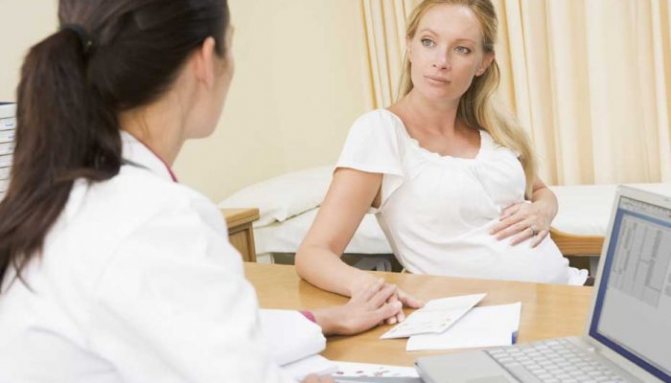
Doctors are unanimous regarding this problem. The risk of having a baby with a chromosomal abnormality directly depends on age. And there is an explanation for this.
Unlike sperm, a woman does not form new eggs, and their number does not increase throughout life. However, over the years, mutations accumulate in them. This is due to the influence of unfavorable factors on the female body, the negative consequences of which are stored in the germ cells and can be passed on to offspring.
The older the woman, the higher the likelihood of participating in the conception of such a defective egg. That is why, after 35–37 years, the risk of having a child with trisomy - Patau, Edwards and Down syndrome - increases sharply.
For example, the probability of trisomy 21 by the age of 40 is 1:365 versus 1:1000 at the age of thirty.
There is no way to prevent chromosomal damage. In developed countries, all patients over 35 years of age are offered invasive diagnostics - amniocentesis. It allows you to identify genetic pathology before the birth of the child and terminate the pregnancy. However, this option is not suitable for all parents due to ethical and religious beliefs.
Mother and baby after giving birth at 36 weeks
It is not always possible to stop the birth process at 36 weeks for any indication that requires the urgent birth of a baby.
As mentioned above, a woman who gives birth at the thirty-sixth week is abnormal and indicates some kind of pathology. Therefore, after childbirth, this reason must be discovered. A new mother must undergo a comprehensive examination, which includes:
- A thorough study of the patient's hormonal status.
- Examination of the tubes and uterus using x-rays using a contrast agent.
- Taking tests to check for the presence of infectious agents in the body or an existing infection with an infectious disease.
A child’s organs at 36 weeks are already practically formed, so premature babies of this period often survive, but subsequently still require careful care.
Prematurely born babies are characterized by:
- Reduced body temperature.
- The need for parenteral nutrition (that is, administered not through the oral cavity, but most often through the blood) and oxygen therapy (oxygen treatment).
- High likelihood of contracting a respiratory disease.
A child of 36 weeks of birth should be in the maternity hospital under the supervision of specialists until he reaches a weight of 2.5 kg, after which the mother and baby, if he does not have any abnormalities or diseases, are discharged home.
Psychological aspect
The attitude towards your own pregnancy also affects the overall health of a woman. Most doctors are unanimous in their opinion: if a woman wants to give birth to a baby, then age does not play a primary role. This is especially true for the first child.
Even when the first pregnancy occurs at 37–40 years old, a woman receives so many positive emotions that they will be enough for the most difficult years of motherhood.
If you give up the desire to have a child due to various fears, then subsequently there is a high risk of developing depression due to unfulfilled desires. And this leads to deterioration of health and exacerbation of chronic diseases. In addition, depression and severe stress can trigger new diseases - endocrine or autoimmune pathologies.
For the second or third child, slightly different principles apply. In this situation, the woman has already encountered motherhood and knows what to expect from it.
Her decision is not related to the fact that her reproductive age is coming to an end, and she may be left without children at all. The mother's choice is thoughtful and conscious. Psychologically, it is quite easy for her to decide on pregnancy, since her family life and relationship with her partner have been established by this time, she already has experience in raising a child and there is no need to fear any pitfalls.
In addition, when there is more than one child, motherhood is more organized and calm, parental anxiety is less pronounced, and a more comfortable psychological environment develops in the family.
Socio-economic aspect
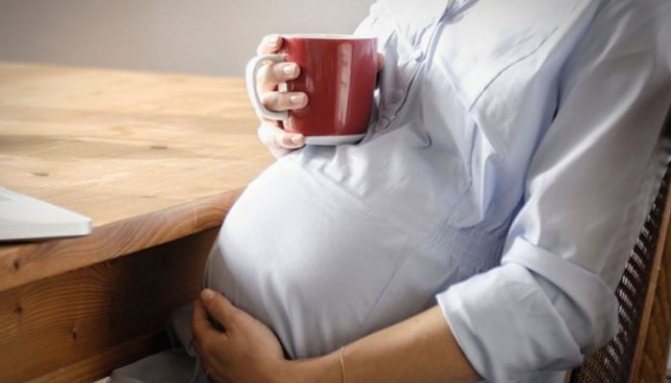
Since medicine considers health as a combination of physical, mental and material well-being, the socio-economic aspect plays an important role when planning pregnancy after 35–37 years.
By this age, the financial base of the family is in most cases quite strong. There is the possibility of high-quality nutrition during the gestation period, and, if necessary, undergoing expensive treatment.
If a woman wants a comfortable stay in the maternity hospital, she can afford to conclude and pay for a contract that implies the choice of a specific doctor and medical institution, a single room with all amenities and other advantages.
However, the outlook for work is not so rosy.










